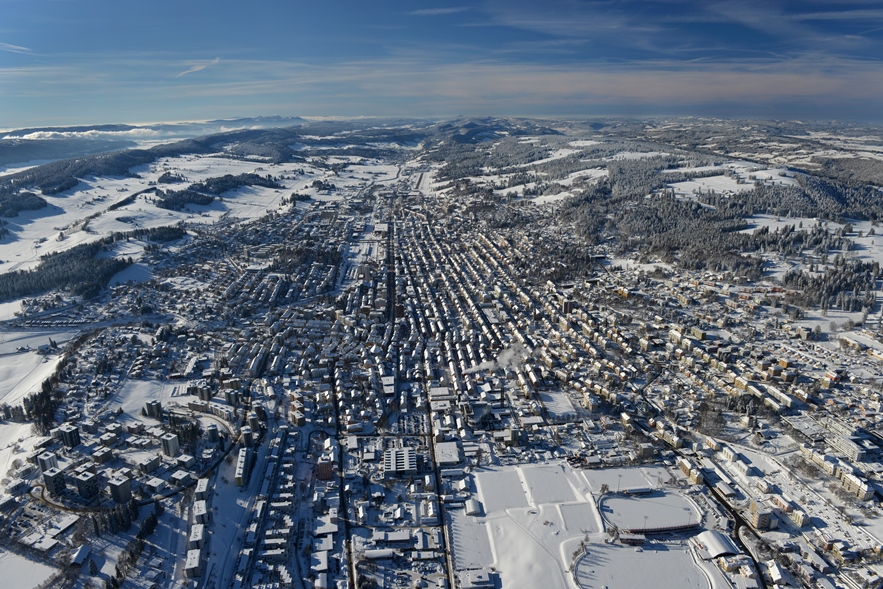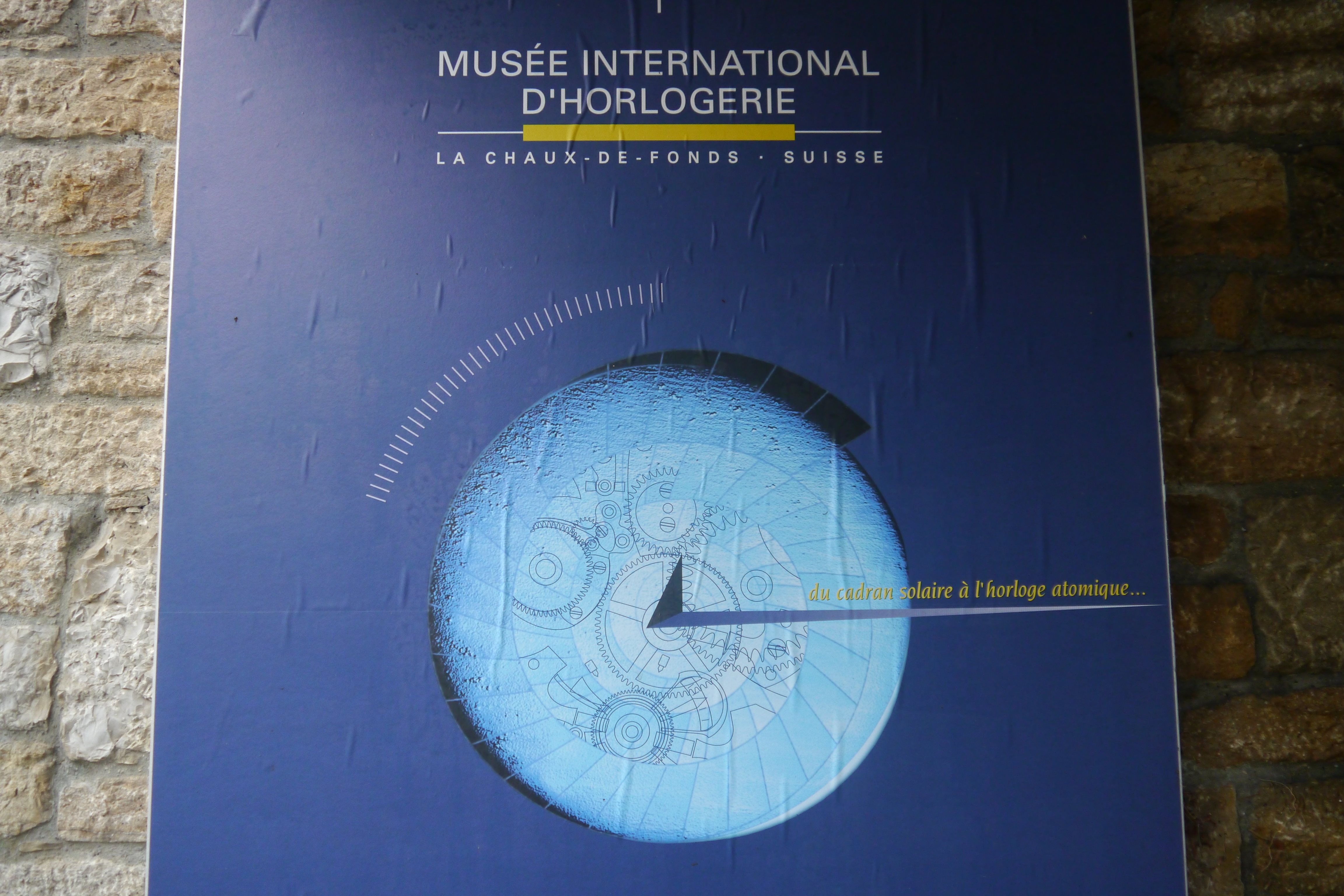[:fr]Marquée par l’architecture et l’horlogerie, l’histoire de La Chaux-de-Fonds se confond avec l’ambition créatrice humaine la plus pointue. La commune qui a vu naître Le Corbusier fut également le théâtre du développement de l’industrie des montres, jusqu’à voir son urbanisme se transformer pour mieux intégrer la fabrication des garde-temps dans son paysage économique. Ce qui poussera Karl Marx à définir La Chaux-de-Fonds comme un exemple unique de « ville-manufacture » créer pour et par l’horlogerie suisse.
Une histoire liée à l’horlogerie
Que se serait-il passé si La Chaux-de-Fonds, petite ville encaissée dans les montagnes du Jura suisse, n’avait pas investi le domaine si prestigieux de la fabrication des garde-temps ? Sans doute serait-elle restée le village agricole qu’elle était depuis sa fondation en 1656 et jusqu’à l’orée du XVIIIe siècle, avant que le goût de la précision ne l’emporte. Mais voilà : l’art de la pendule s’est installé au cours du siècle des Lumières, et dès le mitan du XVIIIe siècle, 68 penduliers et 8 ébénistes s’occupent à ce fier passe-temps. Ce changement, il faut le signaler, on le doit à une personnalité exceptionnelle, qui a marqué autant Le Locle que La Chaux-de-Fonds : Daniel JeanRichard, horloger mythique autodidacte qui fut à l’origine du système de l’établissage et, par conséquent, de l’expansion de l’industrie horlogère dans le canton de Neuchâtel.
L’important accroissement démographique et économique que connaît La Chaux-de-Fonds au XIXe siècle est lié intimement à celui de l’industrie horlogère, et notamment aux montres, qui feront la fortune de la ville. En 1870, presque 50 % de la population locale travaille directement ou indirectement dans le secteur horloger – soit près de 4 500 individus. Quelques décennies plus tôt, en 1820, la ville fut choisie pour accueillir le siège du Bureau de contrôle cantonal des métaux précieux – métaux si indispensables à l’habillage des garde-temps. C’est pour ces raisons que, durant 100 ans, La Chaux-de-Fonds fut le pivot mondial de l’horlogerie.

La Chaux-de-Fonds, une ville horlogère jusqu’au bout des rues
Qu’est-ce qui distingue La Chaux-de-Fonds, comme sa voisine Le Locle, de la plupart des villes alentour ? Certainement pas le climat (froid et rude) ou la sérénité des lieux. Non, ce qui différencie ces deux communes, c’est ce qu’on appelle leur « urbanisme horloger », le fait que leur histoire se confonde tant et si bien avec celle de l’industrie horlogère, que leurs artères et leurs immeubles ont été pensés en regard de la fabrication locale.
À l’instar de ce qu’il se passera au Locle près d’un demi-siècle plus tard, La Chaux-de-Fonds est victime, en 1794, d’un vaste incendie qui laisse la commune exsangue. La municipalité décide alors de reconstruire en adoptant un consensus étonnant entre soucis hygiénistes et efficacité de production. Voilà donc un exemple – très singulier – de cité pensée, dessinée et construite en regard d’une mono-économie, celle des horloges et des montres.
Au fil du XIXe siècle, La Chaux-de-Fonds développe un urbanisme dont le but est de favoriser la prospérité économique due à l’horlogerie : les ateliers y côtoient les logements des ouvriers au sein des mêmes bâtiments, les édifices se spécialisent pour devenir des fabriques, dans une symbiose totale et exceptionnelle entre deux besoins – social et industriel. Il ne manquerait plus que la ville, vue du ciel, dessine un cadran de montre avec ses aiguilles, pour que la corrélation soit parfaite. Ce qui faisait dire à Karl Marx, dans Le Capital, que La Chaux-de-Fonds pouvait être considérée tout entière comme une unique manufacture horlogère, ou « ville-manufacture ».
La Chaux-de-Fonds et Le Locle ont d’ailleurs été distinguées par l’Unesco, qui a inscrit, en 2009, leur urbanisme horloger au patrimoine mondial de l’humanité. En outre, depuis 2010, une Biennale du patrimoine horloger prend ses quartiers à cheval entre ces deux communes, dans le but de familiariser le public avec ce patrimoine sans équivalent.
 Le présent horloger de La Chaux-de-Fonds
Le présent horloger de La Chaux-de-Fonds
Aujourd’hui, La ville de La Chaux-de-Fonds continue de faire prospérer son héritage horloger. De nombreuses manufactures s’y déploient : Breitling, Cartier, Corum, Girard-Perregaux, Jaquet Droz, JeanRichard, TAG Heuer… dont il est possible de visiter les ateliers afin d’y découvrir les secrets de fabrication des montres, en observant les horlogers dans leur travail quotidien. – à condition de prendre rendez-vous ! Dans le même temps, la Haute École Arc Ingénierie forme (entre autres) les étudiants à l’art de la restauration et de la conservation, si précieux dans l’entourage des montres.
Quant au Musée international d’horlogerie, il propose, aux néophytes comme aux spécialistes, quelques 2 700 montres, 700 horloges et 4 500 objets divers (chronomètres, cadrans solaires et autres installations non mécaniques) à travers une exposition permanente qui retrace l’évolution historique de la technique et de l’art de fabriquer les garde-temps.[:en]Marked by architecture and watchmaking, the history of La Chaux-de-Fonds merges with the most cutting-edge human creative ambition. The town where Le Corbusier was born was also the scene of the development of the watch industry, until its urbanism was transformed to better integrate the manufacture of timepieces in its economic landscape. This will push Karl Marx to define La Chaux-de-Fonds as a unique example of « city-manufacture » created for and by Swiss watchmaking.
A history related to watchmaking
What would have happened if La Chaux-de-Fonds, a small town surrounded by the Swiss Jura mountains, had not invested in the prestigious domain of timepiece manufacturing? No doubt it would have remained the agricultural village that it was since its foundation in 1656 and until the eighteenth century, before the taste for precision prevails. But here it is: the art of the clock was installed during the Enlightenment, and from the mid-eighteenth century, 68 clock and 8 cabinetmakers busy this proud hobby. This change, it must be pointed out, is due to an exceptional personality, which has marked Le Locle as much as La Chaux-de-Fonds: Daniel JeanRichard, self-taught mythical watchmaker who was at the origin of the system of the establishment and, consequently, the expansion of the watch industry in the canton of Neuchâtel.
The important demographic and economic growth experienced by La Chaux-de-Fonds in the nineteenth century is intimately linked to that of the watchmaking industry, particularly watches, which will make the city’s fortunes. In 1870, almost 50% of the local population worked directly or indirectly in the watch industry – nearly 4,500 individuals. A few decades earlier, in 1820, the city was chosen to host the seat of the Cantonal Bureau of Control of Precious Metals – metals so indispensable to the dressing of timepieces. It is for these reasons that, for 100 years, La Chaux-de-Fonds was the world’s leading watchmaker.

La Chaux-de-Fonds, a watch city at the end of the streets
What distinguishes La Chaux-de-Fonds, like its neighbor Le Locle, from most of the surrounding cities? Certainly not the climate (cold and rough) or the serenity of the place. No, what differentiates these two communes is what is called their « watchmaking urbanism », the fact that their history is so closely linked with that of the watch industry, that their arteries and buildings have been thought with regard to local manufacturing.
Like what will happen in Le Locle nearly half a century later, La Chaux-de-Fonds is the victim, in 1794, of a large fire that leaves the commune bloodless. The municipality then decides to rebuild by adopting a surprising consensus between hygienist concerns and production efficiency. Here is an example – very singular – of a city of thought, drawn and constructed with regard to a mono-economy, that of clocks and watches.
Over the course of the nineteenth century, La Chaux-de-Fonds developed an urban plan whose purpose was to promote the economic prosperity of watchmaking: the workshops rub shoulders with workers’ housing in the same buildings, the buildings specialized in becoming factories, in a total and exceptional symbiosis between two needs – social and industrial. It would be more than the city, seen from the sky, draws a watch dial with its hands, so that the correlation is perfect. What made Karl Marx say in Le Capital that La Chaux-de-Fonds could be considered as a single watch manufacture, or « manufacturing city ».
La Chaux-de-Fonds and Le Locle have been distinguished by UNESCO, which, in 2009, listed their watchmaking urbanism as World Heritage of Humanity. In addition, since 2010, a Biennale of the watchmaking heritage has been straddling between these two municipalities, in order to familiarize the public with this unique heritage.
The present watchmaker of La Chaux-de-Fonds
Today, the city of La Chaux-de-Fonds continues to prosper its watchmaking heritage. Many factories are spreading: Breitling, Cartier, Corum, Girard-Perregaux, Jaquet Droz, JeanRichard, TAG Heuer … it is possible to visit the workshops to discover the secrets of watch making, observing watchmakers in their daily work. – provided you make an appointment! At the same time, the Haute Ecole Arc Ingénierie trains (among others) students in the art of restoration and conservation, so precious in the entourage of watches.
As for the International Watchmaking Museum, it offers, to neophytes and specialists, some 2,700 watches, 700 clocks and 4,500 various objects (chronometers, sundials and other non-mechanical installations) through a permanent exhibition that traces the evolution history of technique and art of making timepieces.[:]
